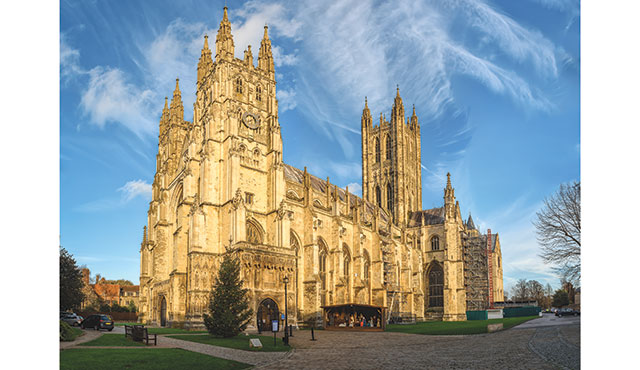As we continue our Diocesan Year of Preparation in anticipation of the dedication of our new Christ Cathedral, periodically a different aspect of this exciting historic endeavor is the focus of these reflections. It is only logical that we focus on the simple question: What is a Cathedral?
From the earliest days of our faith, Christians have gathered to ‘break the bread’ as they listened to the marvels of the Lord enshrined in the ‘memoirs of the Apostles,’ as St. Justin, writing in the 2nd century, so beautifully referred to the Gospels. The earliest locations where Christians gathered for the Eucharist were undoubtedly in ‘house churches’ belonging to the more affluent members of the community. Fearing arrest and persecution, these house churches were often unadorned on the outside with simple frescoes of the Good Shepherd or figures of the prophets and luminaries from the Old Testament in the room set aside for the celebration of the Eucharist.
Following the lifting of the official ban on Christians by the Emperor Constantine through his Edict of Milan in 313 AD, Christians could now worship publicly without fear of government harassment and persecution. With the growing number of converts to the faith, larger spaces were needed for worship. Often, public court buildings or ‘Basilicas’ were taken over and re-purposed for sacred use. These buildings were often referred to in Latin as the domus ecclesiae or ‘house of the church.’ This beautiful expression underscored the fact that a ‘church,’ in its deepest and most important meaning, remains the living stones of God’s Holy People!
In each city, the first church to be designated would be that of the chief shepherd or successor of the first apostles who brought the good news of Christ to a particular portion of the Lord’s vineyard. If the community was small enough, that would be the sole ‘church’ presided over by the bishop. Hence, in the city of Rome, Constantine gave over land for the building of the ‘first church’ on the Lateran Hill and designated that as the Church of the Bishop of Rome or his Cathedral. To this day, the Cathedral Church of the See of Rome is St. John Lateran.
As the Christian communities grew in number and the Cathedral Church could no longer adequately accommodate their need, ‘suburban’ churches were built and delegates of the Bishop or ‘presbyters’ were sent to celebrate the Eucharist in the name of the Bishop in these various ancillary churches. In Rome, to show the intimate relationship between the unity of the Bishop with the presbyters in the suburban churches, on Sundays, a small fragment of the consecrated host would be sent to all the suburban church so that it might be co-mingled with the consecrated wine – thus, connecting the Bishop to each celebration. Through this simple yet profoundly meaningful symbolic gesture, the words of St. Ignatius of Antioch, writing in the 2nd century, came alive for God’s People, “Where the Bishop is, there is the Church.”
When the Diocese of Orange was formally established in June 1976, the church of Holy Family in the see city of Orange, was designated as our Cathedral Church. This parish Church, though modest in size, has served our local Church as its ‘mother church’ for the formative years of our growing Diocese. With a Catholic population that now exceeds 1 million, our long-awaited hope for a Cathedral Church that can more adequately meet our liturgical needs will soon be realized in Christ Cathedral! We rejoice in God’s loving providence!

